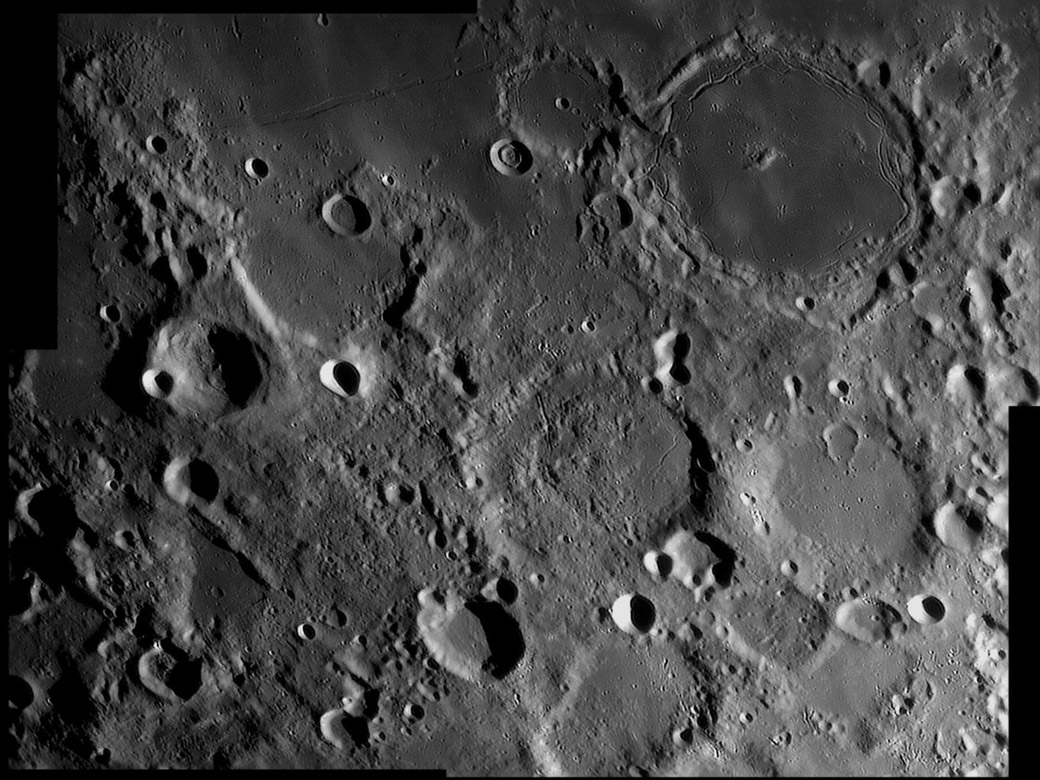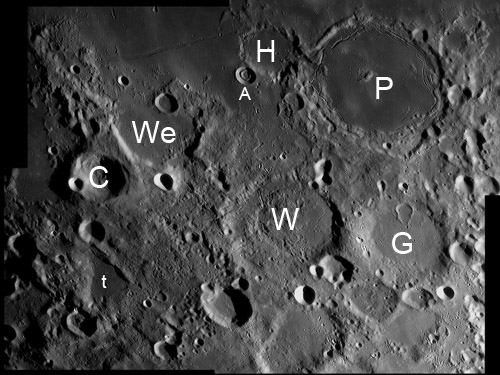February 18, 2012
Museum of Oddities

image by Bruce Kingsley, UK
 |
Where to start? This region displays so many varied, interesting, and sometimes unique features that it is a museum of lunar oddities. Foremost is the classic concentric crater Hesiodus A (A on image to left) near top center of the image. At 15 km diameter this is one of the larger concentric craters, although its inner ring diameter of 40% of the outer rim is very typical. What is unusual is the two small peaks in the middle. Nearby Pitatus (P) is a wonderful example of a floor-fractured crater, although an unusual one. Many - most? - FFC have less lava flooding and show terraced walls, central peak and an elevated and fractured floor. Pitatus is so thoroughly flooded that only remnants of its peaks and terraces remain, and we can't tell if its floor is elevated or merely full of lava. Have you ever noticed that neighboring Hesiodus (H) is a miniature version of Pitatus? Take a look. Moving inland from the mare shore is a terrain dominated by ejecta. Gauricus (G) has a very unusual smoothly curved rim to the west and south. Wurzelbauer (W) is a crater within a crater, but not like a concentric crater; it appears to be a second chance impact within an earlier crater. Wurzelbauer has a rough floor generally but the eastern side is smooth and crossed by a rille. I suppose that the rough material wirhin W is basin ejecta from Orientale or possibly Imbrium, as is the similar rough stuff to the west. The rounded rim of G may be plastered ejecta, perhaps the same stuff the W rille cuts and that fills G's floor. Another likely basin ejecta deposit but oddly different is the darker material in a tee-shaped depression (t). Finally, notice the short alignments of craters between W and t - these are also probably basin secondaries. Small clusters of Tycho secondaries and associated ray splashes are easy to see in Pitatus but are also visible elsewhere. A lot of history in this museum. |
Chuck Wood
Technical Details
2012-02-02, 20:21 to 20:26 UT. 350 mm SCT (C14), 10 metres focal length + Skynx 2-0 ccd + astronomik Red filter; best 2000 frames of 3300 stacked using Registax 6, mosaicked in Photoshop cs2.
Related Links
Rükl plate 64
Yesterday's LPOD: Copernicus On the Limb
Tomorrow's LPOD: Making an Assault On Orientale
COMMENTS?
Register, Log in, and join in the comments.



